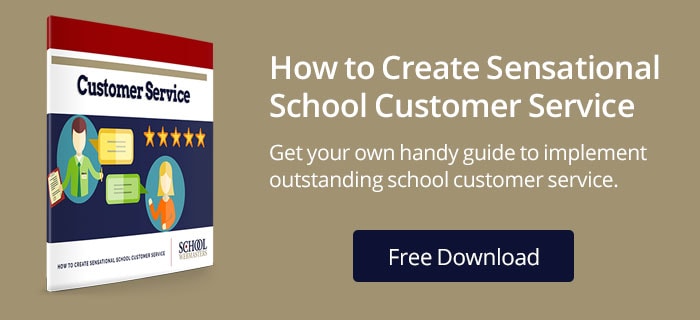Improve school customer service by modeling civility
As a baby boomer, I am not exactly proud of the fact that my generation is stereotyped as rebellious when it is also associated with self-centeredness. Although admittedly, many of our bell-bottom, tie-dyed 60’s era styles and attitudes were replaced with tailored suits and success-driven values less than a decade later. But what if we were so focused on learning and then instilling self-respect (first for ourselves and then in our children) that somehow the very idea of self-restraint went up in smoke (no pun intended).
Self-restraint became especially lacking with the advent and anonymity of the many forms of virtual communication we now enjoy. The fact that people say things online that they might never do in a face-to-face situation has been called a “disinhibition effect.” What might have been blunt or outspoken before becomes confrontational, foul-mouthed, and just plain mean when we don’t have to be accountable for our actions. We’ve gone from mere informality (a good thing in many communication situations) right smack into incivility. Take a look at comments made anonymously by posters to blogs and forums if you don’t believe this has become a sad situation.
Because of the anonymity that comes with the internet, and the sad fact that many of us require incentives to behave, be thoughtful, and be kind, this lack of self-restraint that society tolerates (and appears to value if you factor in those who some of our youth idolize) has contributed to issues like bullying (cyber and otherwise), road rage, and violence in general. Our focus on achievement, particularly strong in the U.S., sometimes causes us to focus more on the “doing” than on the “being” and this attitude will allow us to justify rude behavior with the idea that the end justifies the means.
So, what can we, as educators, parents, and citizens do to promote civility?
As an educator:
- Revive the idea of teaching common etiquette as part of relationship skills in staff development with activities or examples for teachers to integrate into the classroom. It might be something as simple as learning when texting and cell phone usage is appropriate or as comprehensive as diversity training to become respectful of cultures different from our own. This initiative must be driven by administrators or it will not take root.
- Create a no tolerance culture for name calling, screaming or yelling, or body language or tone of voice that communicate disrespect or disdain. Reward civility wherever you see it—and reward it publically when possible.
- Become aware of others (and listen to their perspectives) and strive for respect and restraint in your own conversations—you are a role model to both staff and students.
- Promote civility and related behaviors on your school website and all of your social media communications. Give parents and students examples to emulate or, better yet, provide actual examples from among your staff and students. Uses real stories to inspire and set examples.
As a parent:
- Enroll your children in a manners class or incorporate the basics into your family dinner time for some thought-provoking discussions. What better way to let your children know what you value than giving it (and them) your time and attention to help them succeed in society.
- Demonstrate personal self-restraint—which is NOT a sign of weakness but a sign of great strength. If you don’t model this trait you will be encouraging self-centeredness in those who look to you for positive examples. Need some helpful ideas, Google ideas for teaching civility.
Put simply, start by being nice. Treat others as you hope you will be treated—and as you hope your children will be treated by others. Be polite. Be considerate. And show your gratitude by saying thank you to those who treat you likewise. Come on all you baby boomers; let’s turn this trend around so we don’t get blamed for the results! These millennials and generation Xers could use our good example. Make civility a part of your outstanding school communication strategies. It is also an essential component of good school customer service.
Recommended Reads:
Choosing Civility: The Twenty-five Rules of Considerate Conduct by P.M. Forni
Return to Civility: A Speed of Laughter Project by John Sweeney & The Brave New Workshop
The Cost of Bad Behavior: How Incivility Is Damaging Your Business and What to Do About It by Christine Pearson and Christine Porath
Good Boss, Bad Boss: How to Be the Best…and Learn from the Worst by Robert I. Sutton

Bonnie Leedy, CEO


